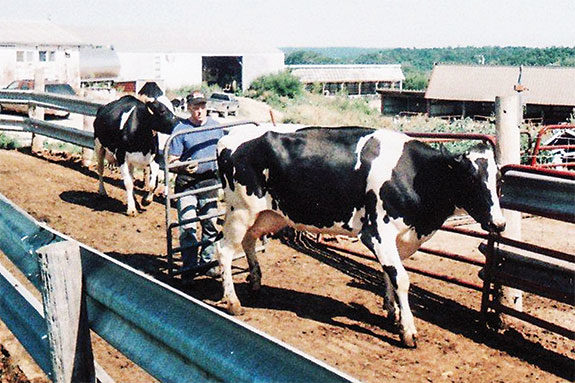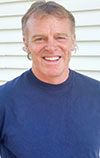Animal welfare is a front-and-center issue that requires careful communication of real procedures used on farms by hoof trimmers. Many of my colleagues and I realize that public perception matters. As an example, a TV report last year used a video captured at a horse show.
This video was of a person whacking a horse with a wiffle bat on its backside trying to get it to load into a trailer. As it turned out, this person had been trying for a long time to load the horse and was frustrated.
As most of us know, a hollow plastic bat on an 1,800-pound equine might project a loud slapping sound, but wouldn’t harm it.
Nonetheless, perception is reality, and it looked like animal abuse. It would have been more beneficial for the person to ask others for help or try a different approach to get the result wanted.
Hoof trimmers also need to watch their cattle-handling situations. You never know who may be watching and who may have a camera or video.
During recent Hoof Trimmers Association conferences, the topics of animal handling and processing of cattle have been raised by researchers. They have offered valuable tips, and I wish to extend my day-to-day approaches with you.
In this article, I would like to discuss three different observations of cow psychology and behavior, use of electric cattle prods and some techniques in handling that have helped me maintain a smooth flow of cattle entering my hoof chute.
Cow psychology
Cows are herd animals, and they also exist within a dominant/submissive hierarchy. Everyone gets the herd part, but sometimes we forget the dominant/submissive part. Cows in all herds will develop a pecking order as to who is more dominant.
In all herds there is a “boss” cow. Each cow is also higher or lower on the pecking order than others. When it comes to trimming a group of cows, it is usually best to save the most dominant cow until last or try to load her when you have help.
We usually do this without even realizing it. The boss cow is usually the last one that cuts out. If you happen to cut her out early and she gets by you, leave her alone, take a breath, pick out another one and do her last.
Another reason we do not want the “boss” cow first is when she is done being trimmed she might, after exiting the chute, turn around and harass other animals we are still working with. New heifers can be challenging.
They may have just recently been introduced to the herd and don’t yet know their rank. They may have been dominant in an earlier group, but they haven’t yet been ranked in the new society.
At the last Hoof Health Conference held by the Hoof Trimmers Association in Lancaster, Pennsylvania, Dr. Gerard Cramer showed a video during his cow handling presentation. The video depicted a heifer entering a pen just before being trimmed.
He noted how she entered the pen with her tail and ears up and prancing. His observation was that she was demonstrating her presence to the trimmer, as if to say “Beware.” I agree with him, yet there was also more going on.
She was also signaling her dominance to the other cows in the group. I commented that I would trim her last and received agreement from some of my colleagues. By cutting her out last, she would no longer be in a position to intimidate the rest of the group.
Cow behavior
Cows will move away from pressure. Some cows will move faster when less pressure is supplied, while others need more pressure to move. Providing cows less options to move in will help them to move to the option you wish them to go.
Sometimes we need to let them think they are making the choice as to where they are going. It sounds simple, but we need to keep these basics in mind when handling cattle.
If you keep ahead of the animal’s shoulder blade, her line of sight will tell her to retreat or pull away. If you go behind her line of sight, she will move ahead as you desire, especially when in a run or line-up of cows.
Sometimes, if you can, setting up gates in a circular or “S” pattern allows cows entering the processing system of the hoof trimmer to see cows returning, thus creating a reassurance that they will be moving on their own back into the herd.
Cow handling
Be prepared. Just because she’s lame and can hardly walk doesn’t mean she can’t run or jump. When trimming cows from a group, it may feel like the first few seem to go easy – and then for no reason the next cow may be challenging to work with.
Even though you think you may not need it, having something in your hand is always a great idea. The disruption caused by having a cow get by you not only wastes time, but it can be frustrating.
I realize most trimmers use cattle prods, but I think we can all use them less if we improve our other cow-handling techniques and processing setups.
As of writing this article, I haven’t used a shocker in more than a month. (I left it at a farm and won’t be returning for at least another week.)
There are a few cows that didn’t read the same cow psychology books I did and are just stubborn and need some encouragement. Likewise, the exceptional cow may feel she can lie down after a pedicure and not be bothered with leaving the chute.
A “slight” jolt of encouragement to these animals is effective without overstressing the animal. I would caution its use on an animal that just isn’t going as fast as you want. Sometimes if she stops, give her seven to 10 seconds and she may just move on her own.
With less use of a shocker, you’ll soon notice how much less stress both you and the cows exhibit. I have found the best cow-handling device is my 4-foot gate. I use a Behlin from Farm and Fleet . I’m sure there are others, but this gate is very light and easy to maneuver.
It adds the advantage of making me appear larger as well as placing something between me and the cow in the event of a back kick. Additionally, cows are conditioned to thinking they can’t get by a gate. This keeps animal flow moving smoothly and with reduced stress, which is just better for everyone involved. PD
Blake is a hoof trimmer in Wisconsin and a member of the Hoof Trimmers Association. Click here to learn more about the association.
PHOTOS
TOP RIGHT: In this photo, Skip Blake directs a cow down a walkway toward a trimming chute. He says the cow pictured behind him was the dominant animal in the group, so he left her to be trimmed last. “She is expressing her dominance by both raising her head and ears,” Blake says. “At the same time, she’s showing her herd instinct by following and not wanting to be left alone.” Photo courtesy of Skip Blake.

Edwin ‘Skip’ Blake
Hoof trimmer
Shamrock Cow Care






